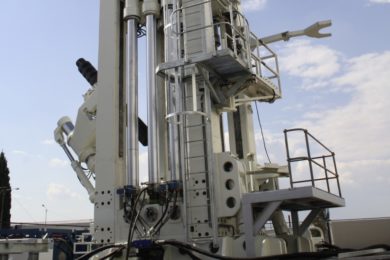In China, the NDRC has announced a RMB0.028/kWh ($0.04/kWh) power tariff rise for non-residential use. The rise in power costs for the Chinese aluminium smelters that buy power from the grid (accounting for ~45% of Chinese production) highlights the main bullish argument for aluminium prices over the medium term – the outlook for rising costs (particularly energy). While the supply/demand fundamentals for aluminium are clearly weak, rising demand and costs look set to support prices over the medium term.
How did marginal costs in Chinese aluminium look prior to the changes in tariffs? Macquarie’s estimates of Chinese aluminium costs suggests the marginal producers purchasing power from the national grid have total costs of around $2,000-2,050/t (this is affected by changes in grid power costs), while those marginal producers with self installed power has total costs of some $1,800-1,850/t (this is unaffected by power grid changes). The split of aluminium production in China coming from self generated power sources and coming from the grid is around 55% (self generated) to 45% (grid).
Macquarie’s calculations show that the tariff increases will add around $40-60/t ($0.02-0.03/lb) to cash (and total) costs of production to those producers buying from grid. So cash costs up to roughly $2050-2100/t for marginal producers purchasing power from the grid. For reference, ex-VAT the Chinese aluminium price is currently trading around $1,950/t. So at current prices most but not all Chinese capacity is profitable. Nonetheless Macquarie expects production and capacity utilisation will continue to ramp up into the Chinese New Year and through 2010 to meet an anticipated continuation in strong growth in Chinese demand.
Partly reflecting the outlook for strong Chinese production growth, aluminium appears to have the weakest fundamentals of all the base metals. Indeed, there is an overhang of aluminium production capacity and stock – capacity utilisation globally is still only around 80%, western world stocks are ~17 weeks of western world consumption, Chinese stocks have risen from 250,000 t in 1Q09 to 520,000t at November 19 (ex-SRB) – and Macquarie’s own forecast that the aluminium market is set to be in small surplus over the next 3 years.
Macquarie notes that “despite this, one of the most common questions we get it is whether there is anything to substantiate a more bullish aluminium price view?” Having noted the bearish factors in the aluminium market above, the main potential for upside risk to aluminium prices over the next two to three years is the potential for increases in the marginal cost of production. Using the Brook Hunt, Macquarie says “we can see that the 3Q09 cost curve could conceivably shift back up towards its mid- 2008 level / shape, as demand and costs of production rise into the global recovery. Indeed, our own estimates in 2008 put the marginal cost of Chinese output at up to $2,600-2,800/t.
“It is unlikely that production costs for higher cost producers (alumina, carbon anode, coal/power) will return to 2008 peak levels anytime soon, however, cost increases over the next two to three years would see today’s prices strongly supported. This is without making assumptions about potential RMB appreciation, which would most likely shift the third and fourth quartiles of the curve higher in particular.”
The medium term cost growth argument is the one of few that can be reasonably used to explain the continued wide contango in the aluminium forward market (which has surprised many given it has remained wide despite a 60% increase in near dated prices).
In summary, there appears to be ample supply of aluminium to come online – China has demonstrated its ability to bring on capacity over the past five years, and there is substantial spare capacity both in and outside of China – as well metal to come out of financing deals (subject to warehouse delivery constraints) over the next one to three years. However a strong global demand recovery could see the size of the aluminium market rise to as big as 42-45 Mt by 2011/12, with potentially higher input costs and potential RMB appreciation combining to mean a higher marginal cost of supply is needed to satiate demand, putting a floor under aluminium prices over that time period. So while Macquarie still believes copper has stronger exposure to a global economic recovery, “it’s not all bearish for aluminium over the medium term.”









